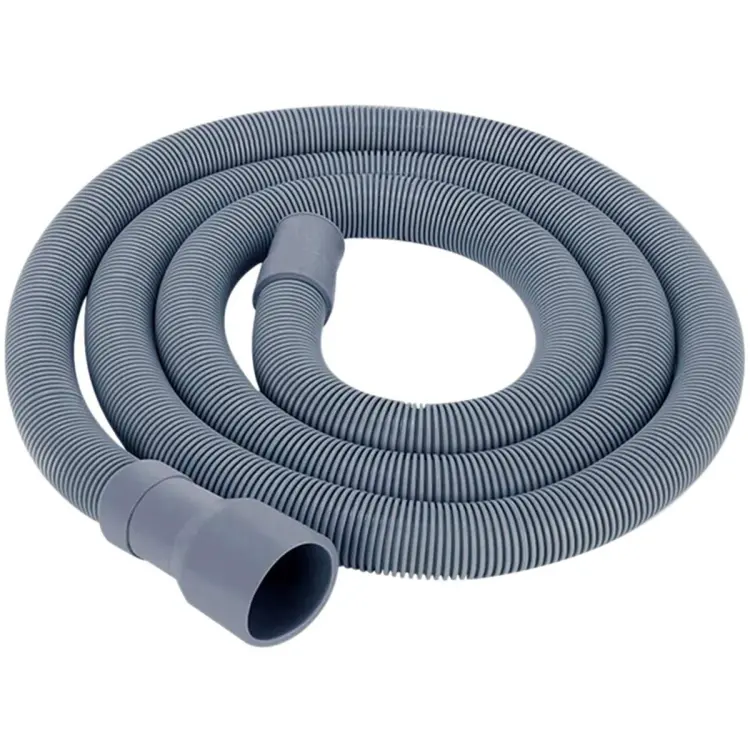Understanding the plumbing system of a washing machine drain is crucial for any homeowner or handyman. A properly functioning drain is essential for the efficient operation of your washing machine and prevents potential water damage. However, navigating the complexities of washing machine drain plumbing can be overwhelming for many. In this ultimate guide from Barry Can Fix It, we will break down the basics of washing machine drain plumbing, explain common issues and their troubleshooting methods, and provide professional tips for maintaining and repairing your washing machine drain system. Whether you are a homeowner looking to tackle a DIY project or a professional handyman, this guide is your go-to resource for understanding Barry Can Fix It’s expertise in washing machine drain plumbing
The importance of proper washing machine drain plumbing

Proper washing machine drain plumbing is vital for the overall functionality and longevity of your washing machine. A well-installed and properly functioning drain system ensures that wastewater from your machine is effectively removed without any leaks or blockages.
One of the key reasons why proper drain plumbing is essential is to prevent potential water damage. If the drain is not installed correctly or if there are any pipe clogs, it can lead to water overflowing from the machine. This can not only cause damage to your flooring and surrounding areas but also result in costly repairs.
Additionally, a well-maintained drain system ensures that your washing machine operates efficiently. A proper drain allows the water to flow out smoothly, preventing any excessive strain on the machine’s motor or drain pump. This, in turn, prolongs the overall lifespan of your washing machine.
By understanding and implementing proper washing machine drain plumbing, you can avoid unnecessary headaches, save money on repairs, and ensure that your machine functions optimally for years to come.
In the next section, we will discuss the common issues that can arise in washing machine drain plumbing and their troubleshooting methods. Stay tuned!
Understanding the basics of washing machine drain plumbing

Understanding the basics of washing machine drain plumbing is crucial for homeowners who want to ensure the proper functionality and longevity of their washing machines. In this section, we will delve deeper into the components and installation process of a washing machine drain system.
The main components of a washing machine drain plumbing system include the drain hose, standpipe, and P-trap. The drain hose connects the washing machine to the standpipe, which is a vertical pipe that allows the wastewater to flow out of the machine. The P-trap, on the other hand, is a curved pipe that prevents sewer gases from entering your home.
When installing the drain system, it is important to follow the manufacturer’s instructions and local building codes. The standpipe should be placed at a height that allows proper water flow without the risk of overflowing. Additionally, the drain hose should be secured in place to avoid any leaks or disconnections.
In the next section, we will discuss common issues that can arise in washing machine drain plumbing and their troubleshooting methods. Stay tuned to learn how to tackle these problems effectively and keep your washing machine running smoothly.
Common problems with washing machine drain plumbing and how to fix them

While understanding the components and installation process of a washing machine drain system is essential, it’s equally important to be aware of common issues that can arise and how to troubleshoot them. By being knowledgeable about potential problems, you can save time, money, and stress in the long run.
One common problem is a clogged drain. Over time, debris such as lint, dirt, and even small articles of clothing can accumulate in the drain hose or standpipe, leading to slow drainage or even complete blockage. To fix this, start by disconnecting the drain hose and cleaning it thoroughly. If the clog persists, you may need to use a plumber’s snake or call a professional for assistance.
Another issue that may occur is a leaky connection between the drain hose and the standpipe. This can cause water to spill out onto the floor, creating a mess and potential damage. To fix this, ensure that the hose is securely connected to the standpipe and consider using a hose clamp for added stability.
Lastly, improper installation of the P-trap can lead to sewer gas odors in your home. If you notice a foul smell coming from your washing machine, it’s likely due to a problem with the P-trap. Check to see if it is properly installed, free from damage or blockages. If necessary, remove the trap, clean it, and reinstall it securely.
In conclusion, understanding common problems with washing machine drain plumbing and knowing how to fix them can help ensure the proper functioning of your washing machine. By addressing issues promptly, you can prevent more significant problems from occurring and prolong the lifespan of your appliance. Stay tuned for our next section, where we will discuss maintenance tips to keep your washing machine drain plumbing in optimal condition.
Tips for maintaining your washing machine drain plumbing

Proper maintenance is key to keeping your washing machine drain plumbing in optimal condition. By following these simple tips, you can avoid common problems and prolong the life of your appliance.
Firstly, make it a habit to regularly clean the drain hose and standpipe. This will help prevent buildup of debris and reduce the chances of clogs. Use a mixture of warm water and vinegar to flush out any accumulated dirt or lint. Additionally, inspect the hose for any signs of wear or damage and replace it if necessary.
Secondly, be mindful of what you wash in your machine. Avoid washing large items that can potentially clog the drain, such as rugs or heavy blankets. Also, remember to check pockets for loose objects like coins or small toys, as these can cause blockages.
Furthermore, consider installing a lint trap or filter. This simple addition can prevent lint from entering the drain system, reducing the risk of clogs and improving the efficiency of your washing machine.
Lastly, schedule regular inspections and maintenance by a professional plumber. An expert can identify any potential issues before they become major problems. They can also provide advice on the best practices for your specific washing machine and drain system.
By implementing these maintenance tips, you can ensure that your washing machine drain plumbing operates smoothly, minimizing the risk of clogs, leaks, and other issues. Stay tuned for our upcoming blog section, where we will address common misconceptions about washing machine drain plumbing.
Calling in a professional for washing machine drain plumbing repairs

While regular maintenance can help prevent common issues with your washing machine drain plumbing, there may come a time when you need to call in a professional for repairs. It’s important to recognize when a problem is beyond your expertise and to seek assistance from a trained plumber.
Some signs that indicate you need professional help include frequent clogs that are difficult to clear, leaks or water damage around the washing machine, unusual noises or vibrations during the wash cycle, and a lingering unpleasant odor coming from the drain.
When choosing a plumber, look for someone who specializes in washing machine drain plumbing repairs. They should have the necessary experience and knowledge to diagnose and fix any issues you may be experiencing. Be sure to ask for references and read reviews to ensure you are hiring a reputable professional.
Remember, attempting to fix complex plumbing problems yourself can worsen the issue and potentially cause more damage. It’s always best to leave it to the experts and avoid any unnecessary stress or risk.
Conclusion
Ensuring the proper functioning of your washing machine drain plumbing is crucial for optimal performance and longevity of your appliance. By following the maintenance tips and recognizing when it’s time to call in a professional, you can avoid costly repairs and extend the lifespan of your washing machine.
Remember, regular maintenance such as cleaning the lint trap and checking for clogs can prevent common issues. However, if you encounter frequent clogs, leaks, unusual noises, or persistent odors, it’s time to seek professional help. Look for a reputable plumber who specializes in washing machine drain plumbing repairs to diagnose and fix any complex problems.
Don’t attempt to tackle complicated plumbing issues yourself, as it can worsen the problem and potentially cause further damage. By prioritizing proper washing machine drain plumbing, you can ensure the smooth functioning of your appliance and have peace of mind knowing that your clothes will come out clean and fresh every time.Barry Can Fix It is here to support you on your journey to maintaining a reliable washing machine drain system


